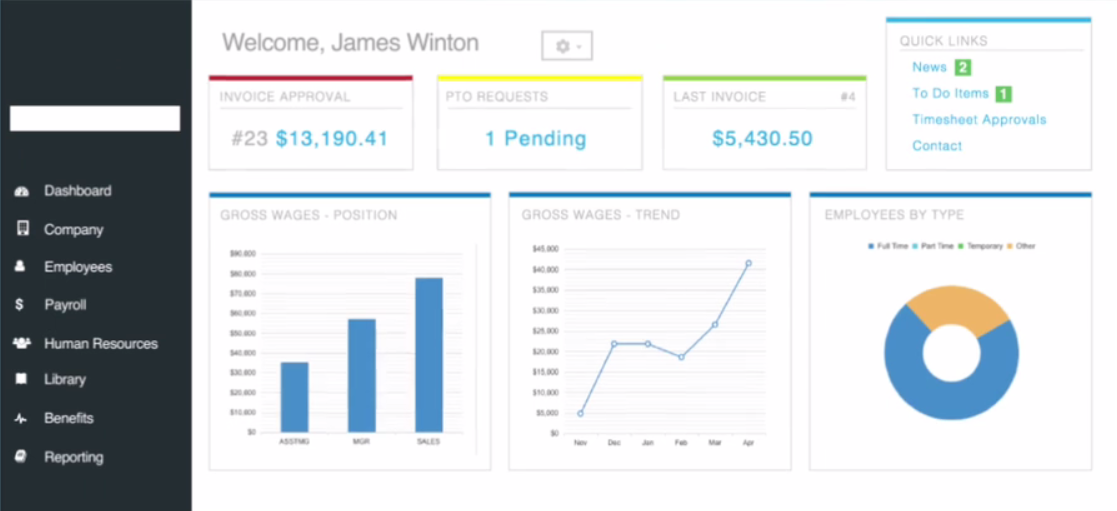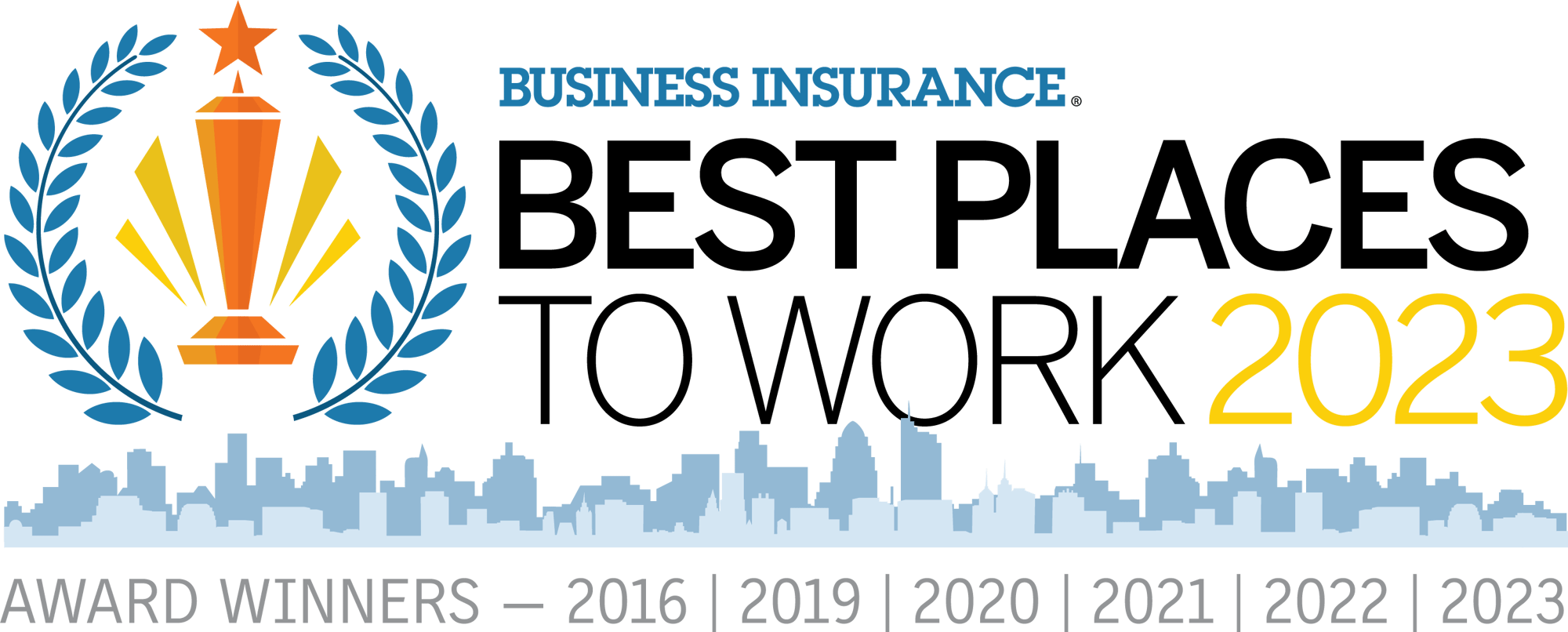A Human Resource Information System, or HRIS, is a software based solution designed to automate the administration of Human Resource functions. Large Employers have been using these systems from companies like Peoplesoft, Workday, and Ulti-Pro for several years. The demand for this technology is now rapidly increasing for Small to Mid-Sized Employers who have been using outdated software or continue to administer HR functions manually.
What do these systems do?
HRIS software allows companies to automate the administration of Recruiting, New Hire Onboarding, Time & Attendance, Payroll, Employee Benefits, HR Compliance, Recordkeeping, and Reporting. Automated software solutions for most of these individual components have been available for many years. A comprehensive HRIS solution integrates these functions under a single technology platform. This can eliminate mounds of paperwork, logging in to multiple HR vendor websites, and increase internal productivity and operating efficiencies.
Does my Company need one?
If you have 50 to 500+ Employees, offer Employee Benefits, and want to ensure accurate HR Compliance and Recordkeeping the answer is more than likely yes. The majority of companies in this market space are already utilizing an automated outsourced payroll system, and may also be using benefits administration or other HR related software. Many of these systems offer some level of HRIS functionality, however in most cases internal administrators are still going in to multiple HR vendor and insurance carrier websites while also trying to consolidate reporting requirements from multiple data sources. As the requirements for administering Payroll – Benefits – Human Resource Compliance have been on a converging path for some time, the efficiencies realized by having all of this data in One Place can have a significant impact on internal operating and staffing requirements. Automating these functions will also allow HR Professionals to reallocate their time towards more productive HR deliverables such as Recruiting, Training, Employee Relations, and Organizational Development.
For illustrative purposes, let’s look at a process most companies waste enormous amounts of time on.
New Hire Onboarding - Traditional
- New Employee meets with HR and fills out Employee Information, W-4, I-9, Direct Deposit and other internal forms.
- Employee Benefit Applications are taken home for Elections / Dependent Information / Signatures and are often returned late and incomplete.
- HR logs in to multiple websites for entry of payroll information, deductions, and personnel information.
- HR logs in to multiple insurance carrier websites to process benefit enrollments.
- HR waits for confirmations, collects and reviews data upon completion, and transfers to Payroll Department.
In many cases this process takes 2-4 hours to complete. Handwritten information may lead to correcting mistakes and completing this process for employees in remote locations can be extremely challenging.
Most of these processes are also required and duplicated upon Employee Separation.
New Hire Onboarding - HRIS
- New Employee receives Welcome E-Mail with a link to HRIS log in from a PC, Tablet, or Mobile Device.
- New Employee logs in and enters Demographic information one time.
- All Payroll Tax Forms, Benefit Applications, and Internal Company Documents are automatically populated and signed via Electronic Signature.
- HR receives notification of completion and completes I-9 verification with Electronic Signature.
- New Employee is now enrolled in Payroll and Benefit Plans with Deductions automatically set up.
In most cases this process can be completed in 15 minutes or less, and can also be done in advance of employment.
What features should I look for in a System?
HRIS solutions for Small and Middle Market Employers typically fall under one of the following categories. Depending on the specific needs your company desires, one of these solutions may be a step towards automation and greater efficiency:
Payroll System with HRIS – Many Payroll Service Providers offer HRIS functionality as add-ons to their payroll software. Functionality may include Applicant Tracking, Automated Onboarding (Payroll Only), Employee Self Service, Time & Attendance, Paid Time Off Tracking, and Customized Reporting. Benefits Administration is typically managed separately or through a third party software provider.
HR Software – These solutions are typically designed to manage Recruiting, Talent and Performance Management, Salary and Job Tracking, Training Programs, and Employment Analytics. Systems that include Benefits Administration usually require separate data input or integration with third party software. These systems do not include Payroll and integrations must be downloaded from a third party payroll service.
HR and Benefits Software – Benefit Administration software solutions have been around for several years and help streamline Open Enrollment, COBRA, and Flexible Spending Accounts. In some cases, these systems have been expanded to include some of the HR metrics described above. Standalone Benefit Administration systems are becoming obsolete as the lack of integration with payroll systems minimizes the efficiencies that can be realized.
System Designs and Flexibility – A fully integrated HRIS platform built on a single SQL database is by far the most effective solution. Many systems appear to be designed this way but in reality are not and rely on data transfers and sweeps from multiple databases. Many companies are also using ERP Systems to manage business operations and accounting. Therefore, exploring whether or not an HRIS platform can integrate with your ERP can be an important factor in the evaluation process.
These solutions are what is known as Software As A Service (SaaS). Administrative tasks and data management are performed at the Client Level with the Software Provider providing Training, Software Maintenance, and Customer Service upon request.
Is there an end to end HRIS solution?
Yes. It would be very difficult for a single HRIS Platform to offer the best of all worlds as there are too many specialty HR software products which may only address one of the functions listed above. Administrative Services Outsourcing (ASO) software solutions are the closest thing to an end to end solution as all of the following functions are included:
- Automated Applicant Tracking*
- Electronic New Hire Onboarding
- Integrated Time & Attendance Solutions*
- Payroll Processing
- Paid Time Off Management
- Benefits and Open Enrollment Administration
- Benefits Invoice Reconciliation and Carrier Payments
- Performance Management Tracking
- License and Training Tracking
- Workers Compensation Claim Tracking and OSHA 300 Log Maintenance
- HR Compliance and Documents Library
- Ad Hoc On Demand Reporting
- Integrated ACA Reporting
- General Ledger Interface
- Employee Self Service
- Employee Communications and Recordkeeping
*Third Party or Private Labeled Software Integrations
Unlike SaaS solutions, ASO service providers include this software solution as part of their service delivery which has the ASO Service Team administering many of these functions for the Client. The ASO provider monitors and oversees these activities and transactions while managing certain functions in a true outsourced delivery.
Do I want the System to include Payroll?
A better question is why would you not? From a transactional perspective, processing of payroll data requires the highest level of accuracy and is the most critical component within an HRIS solution. As the “nerve center” of an HRIS platform, payroll transactions take place every 1-2 weeks for all employees whereas a change in benefits or other HR information make take place 1-2 times per year. You may have a state of the art HRIS that manages benefits and a multitude of other HR functions very well, but if the administrator still needs to re-enter this information in a separate payroll system many of the efficiencies are lost. The alternative then is to rely your HRIS and Payroll Systems talking to each other. This can work, but the likelihood of errors surfacing following file exchanges, system updates, or workflow modifications is much greater.
How much do these Systems cost?
Large Employers often purchase HRIS platforms with costs running into the millions of dollars. HRIS solutions for the Small and Middle Market Employers are rarely purchased and owned by the company. In most cases a Software As A Service HRIS provider will charge a number of different services fees which can include Number of Users, Licenses, Check Processing Fees, W-2’s, Time & Attendance Log in’s, Employee Self Service, and more. Fees for Payroll Processing and HRIS access are typically $20 - $25 Per Employee Per Month vs $12 - $15 Per Employee Per Month for basic Payroll Processing and Tax Filing. These providers then add User Fees as additional functionality is activated at a rate of $2 -$4 Per Employee Per Month for each new feature used.
ASO providers typically charge an all-inclusive Per Employee Per Month Administrative Fee. This includes access to all of the HRIS functionality and Client Services the ASO is providing. These Fees range from $30 - $75 Per Employee Per Month based upon the total number of employees and other variables such as inclusion of HR Consulting and Management Services.
What is the end result I should expect?
Successful implementation of an HRIS solution will result in a much more efficient HR experience for both Managers and Employees. As total employment costs are the first or second largest expense for most businesses, leveraging this technology throughout your organization will be a critical element in controlling internal staffing expenses which can be transferred directly to your bottom line.





